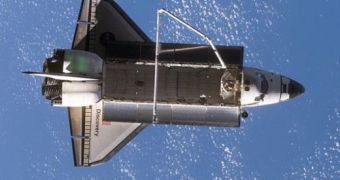After delaying the launch four times, officials at NASA finally decided to give the go-ahead for the new space shuttle Discovery mission. The seven members of the crew will take off on Wednesday night, from the Kennedy Space Center, on Merritt Island, Brevard County, Florida. The purpose of the STS-119 mission is to replace NASA astronaut Sandra Magnus with Koichi Wakata, a flight engineer with the Japanese space agency JAXA. The Discovery crew will also assist their colleagues on the International Space Station with the installation of the last set of solar arrays on the orbital platform.
When the mission completes successfully, the ISS will be able to fully benefit from its completed Integrated Truss Structure (ITS), the array of solar panels that give energy to life-support systems and to all the electronic equipments used in the module laboratories. The fourth and final starboard module will be added as soon as the spacecraft docks. This will by Discovery's 36th flight into space, as well as the 28th shuttle mission to the space station.
The flight was originally scheduled to take place in mid-February, but concerns about the safety of one of the craft's valves grounded the mission, as NASA engineers didn't want to take any chances. On Friday, at a meeting that took place at the KSC, managers decided that the issue had been satisfactorily fixed, and that the craft was ready to launch.
According to information shared by the Russian space agency RosCosmos, the shuttle Discovery needs to launch to the ISS by March 16th at the latest, because a Soyuz rocket is scheduled for departure and docking to the station on March 26th, and the American space shuttle needs to be gone by that time. If they miss this window, NASA officials will have to postpone the flight until April, after the Russian-built Soyuz will have cleared out.
Additional concerns arose on account of the fact that the shuttle's crew fears the larger amounts of debris that now fly in orbit, following the powerful collision that saw an American and a Russian satellite completely destroyed in high Earth orbit. According to the head of space operations at NASA, Bill Gerstenmaier, chances for the craft being hit by debris rose from 1-in-336 before the collision to 1-in-318 at this point.

 14 DAY TRIAL //
14 DAY TRIAL //